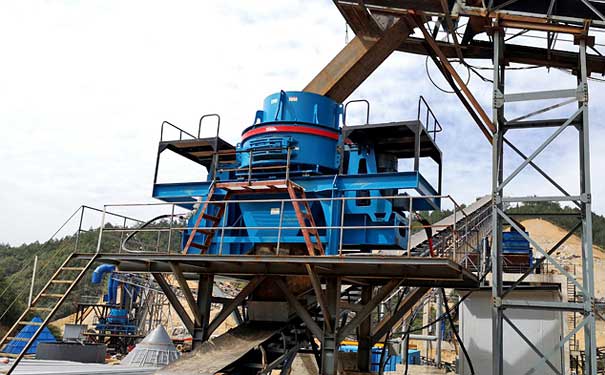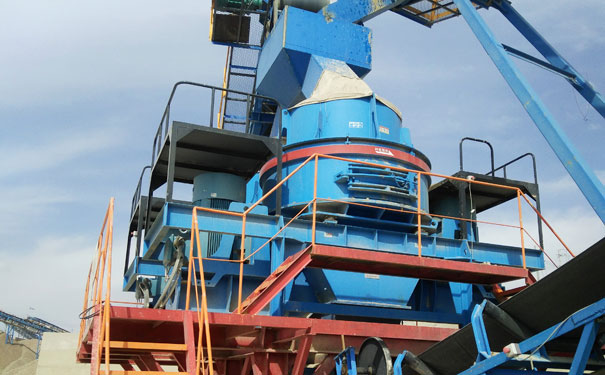The impact sand making machine was born for stone shaping. After years of development, it has become a common choice for artificial sand making and stone shaping. Long-term use will inevitably lead to failures. This article summarizes ten common failures of impact sand making machines.

- The motor is abnormal
The power supply is not connected properly: check the switch and circuit, as well as the contact point, and solve the problem in time.
Line connection error: It may be a short circuit, and the paint needs to be softened. After repairing, wrap it with an insulator and paint and dry it.
The control device is not connected properly: connect the control device. - Power on but not working
The motor is stuck: use a professional universal meter to check the circuit, power supply, and wire, find the problem and correct it.
The voltage is too low: replace the thick cable. - The motor shell is electrified
Moisture of the motor: moisture will accelerate the aging of the insulator, which needs to be dried by a special dryer.
The grounding measures are wrong: check the grounding of the junction box and the lead wire, and correct it in time if it does not meet the requirements. - The machine body vibrates abnormally and runs unevenly
The feed is too large: try to reduce the feed size and observe whether the machine body is stable.
Impeller failure: check whether the impeller is severely worn and needs to be replaced; whether the impeller installation is balanced and needs to be adjusted.
Foundation problem: the equipment is installed on a concrete foundation and fixed with anchor bolts. However, the impact sand making machine runs at high speed and constantly impacts when it is working. Therefore, when the body vibrates abnormally, check whether the foundation bolts needs to be reinforced. - Bearing heating
Lack of oil: The bearing should be checked and refueled frequently. Pay attention to the oil level when refueling. If it is too much, the bearing will become hot.
Wear: Damage to the bearing of the grinder will also cause the bearing to heat up, so it must be replaced in time.
Foreign matter: Be careful not to have foreign matter such as dust in the bearing part, and clean it in time if it is found.
Over-tightening of the upper cover: The upper cover of the bearing is too tight and the tightening of the bolts needs to be adjusted. - Belt flip
Belt wear: The belt wears and turns over and needs to be replaced with a new V-belt.
Conveyor assembly: For belt conveyor assembly, the pulley must be adjusted to the same plane. - The shaft end leaks oil
Damage to the sealing ring: The sealing ring has been moving up and down with the bearing. After a long period of time, it will wear out and cause oil leakage. It is time to replace the sealing ring. - The output granularity becomes larger
V-belt is loose: the equipment runs every day, and the conveyed V-belt becomes loose after a long time, so adjust the tightness in time.
Inappropriate feed size: the feed must be strictly in accordance with the equipment parameter standards. If it is too large, the machine will swing and wear faster; if it is too small, the material will not collide sufficiently and the discharge will not be ideal.
The impeller speed is unreasonable: adjust the impeller speed to achieve the desired effect. - Abnormal sound
Bearing and gear problems: Bearings and gears are easy to wear, and there will be rumbling noises when there are problems, and they must be repaired or replaced in time.
Loose bolts: check whether the bolts need to be reinforced.
Over-iron: if iron is mixed into the feed, or the lining, impeller and other parts are loose and fall off, you will hear the sound of metal clashing inside the machine. Be sure to stop the machine for inspection, tighten or replace related parts. - Idling resistance becomes larger
Material blockage: If the sealing cover on the bearing is blocked by material, the resistance will increase. When cleaning the blockage, check whether other devices are blocked.

